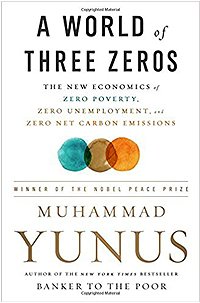Capitalism is Interpreted too Narrowly
Many of the problems in the world remain unresolved because we continue to interpret capitalism too narrowly. In this narrow interpretation we create a one-dimensional human being to play the role of entrepreneur. We insulate him from other dimensions of life, such as, religious, emotional, political dimensions. He is dedicated to one mission in his business life ---- to maximize profit. He is supported by masses of one-dimensional human beings who back him up with their investment money to achieve the same mission. The game of free market works out beautifully with one-dimensional investors and entrepreneurs. We have remained so mesmerized by the success of the free market that we never dared to express any doubt about it. We worked extra hard to transform ourselves, as closely as possible, into the one-dimensional human beings as conceptualized in theory to allow smooth functioning of free market mechanism.
Economic theory postulates that you are contributing to the society and the world in the best possible manner if you just concentrate on squeezing out the maximum for your self. When you
get your maximum, everybody else will get their maximum.
As we devotedly follow this policy sometimes doubts appear in our mind whether we are doing the right thing. Things don’t look so good around us. We quickly brush off our doubts by saying all these bad things happen because of “market failuresâ€; well-functioning markets cannot produce unpleasant results.
I think things are going wrong not because of “market failure.†It is much deeper than that. Let us be brave and admit that it is because of “conceptualization failure.†More specifically, it is the failure to capture the essence of a human being in our theory. Everyday human beings are not one-dimensional entities, they are excitingly multi-dimensional and indeed very colourful. Their emotions, beliefs, priorities, behaviour patterns can be more aptly described by drawing analogy with the basic colours and millions of colours and shades they produce.


